Fermenting Beer with Bulldog B1 Universal Ale Yeast
Published: October 24, 2025 at 10:32:57 PM UTC
This article provides a detailed Bulldog B1 review for homebrewers. It focuses on real performance when fermenting with Bulldog B1 Universal Ale Yeast. It covers attenuation, flocculation, and flavor outcomes for hoppy and fruity ales.
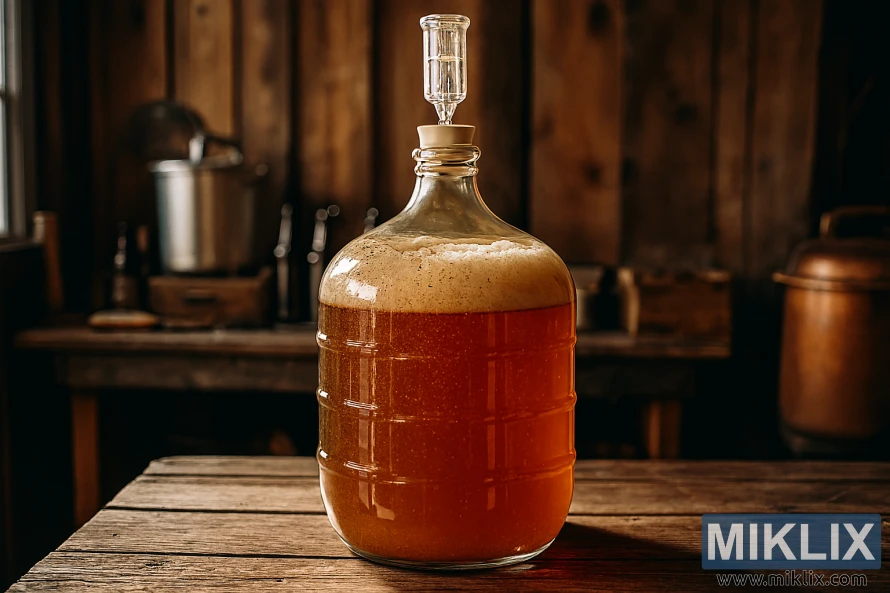
The goal is practical: give measurable brewing guidance, troubleshooting tips, and recipe examples. This way, brewers can decide if homebrew yeast Bulldog B1 fits their cellaring, timeline, and flavor goals. Expect straightforward advice on dosage, temperature, and expected final gravity based on bench trials and community reports.
Key Takeaways
- Bulldog B1 Universal Ale Yeast handles a wide range of ales, from American IPAs to fruit-forward pale ales.
- Typical attenuation and body make it a versatile option for brewers seeking neutral to slightly estery profiles.
- Proper pitching and storage extend viability and improve consistency when fermenting with Bulldog B1.
- Comparisons to US-05, S-04, and BRY-97 show similar performance, with subtle differences in ester profile and flocculation.
- This Bulldog B1 review emphasizes practical adjustments and troubleshooting to achieve repeatable results.
Why Choose Bulldog B1 Universal Ale Yeast for Homebrewing
Bulldog B1 stands out as a robust, all-purpose dry ale yeast. It's perfect for brewers aiming to capture clear hop and fruit notes. Its consistent attenuation and steady fermentation across a wide temperature range make it a favorite. Homebrewers often choose Bulldog B1 for IPA, pale ale, and fruity amber ales.
The yeast's benefits are evident in its ability to retain aroma and predictably drop gravity. It showcases hop esters without introducing harsh phenolics. This balance is crucial for hobbyists who value expressive hops and clean fruit tones.
Its ease of use is another significant advantage. Available in dry sachets, it allows for simple pitching methods. Whether sprinkling on top of wort or rehydrating for cautious starters, it minimizes the risk of error in small-batch brewing.
Versatility is key when a single strain must cater to multiple styles. Bulldog B1 serves as a universal ale yeast for pale ales, ambers, session beers, and hop-forward specialty brews. It preserves hop character while maintaining enough body for a satisfying mouthfeel.
Some question if Bulldog B1 is a rebadged strain from another supplier. Its performance metrics, such as attenuation, flocculation, and temperature range, align with common dry ale strains. Reviewing these metrics helps brewers evaluate its suitability for their recipes.
- Clear hop and fruit expression
- Consistent attenuation and finish
- Simple dry-sachet pitching for low-effort batches
- Wide suitability across ale styles
For brewers seeking flavor clarity and reliable results, Bulldog B1's benefits are undeniable. Its advantages in homebrewing make it a practical choice for both newcomers and seasoned brewers. It offers a dependable, expressive ale strain.
Bulldog B1 Universal Ale Yeast
Bulldog B1 comes in 10 g sachets, marked with item code 32101. The packaging indicates that one 10 g sachet will cover 20–25 L (5.3–6.6 US gallons). It includes dosing guidance and basic handling notes for homebrewers.
Product certifications are clearly stated on the pack. Bulldog B1 holds Kosher and EAC certification. These certifications are crucial for brewers needing verified sourcing and regulatory compliance.
This strain is marketed as a universal ale yeast. It enhances hoppy and fruity character while maintaining robustness and consistency. Brewers praise its steady attenuation and clean fermentation, which accentuates hop aroma without excessive phenolics.
- Sold format: 10 g sachets only.
- Item code: 32101 for ordering and tracking.
- Pack guidance: one sachet per 20–25 L batch.
Community discussion has raised questions about the strain's exact origin. Thus, Bulldog B1 details and specs are often compared with well-documented commercial strains. Forum threads focus on fermentation behavior, flocculation, and flavor impact to help brewers match the yeast to recipes.
For quick reference, Bulldog B1 sachet information covers packaging, suggested dosing, and certification. These facts make it easier to plan pitch rates and anticipate performance in small to medium batches.
Target Beer Styles for Bulldog B1
Bulldog B1 beer styles focus on hop-forward, clean ales. These ales highlight hop aroma and flavor. Craft IPAs benefit from this, showcasing bright citrus, resinous pine, or tropical fruit notes.
American Pale Ale is a perfect match for Bulldog B1. This style ensures clear malt support and firm attenuation. This allows the hop character to shine, unobscured by yeast esters.
New England and hazy IPAs also suit Bulldog B1. They offer a soft mouthfeel with expressive hop haze. Expect balanced attenuation and a smooth finish, enhancing the juicy hop tones of modern IPAs.
The yeast's versatility extends beyond West Coast styles. It's ideal for session IPAs, double IPAs, and single-hop pale ales. It also works well in brown ales or amber ales, adding a subtle fruity note.
- Primary picks: American IPA, Bulldog B1 IPA, American Pale Ale, Bulldog B1 pale ale
- Secondary uses: NEIPA, session IPA, single-hop showcases
- Occasional fits: amber ale, brown ale where a clean profile helps malt details
Consider Bulldog B1 as an all-round ale yeast for hop clarity and drinkability. The final beer's character is more influenced by recipe choices, mash profile, and hopping schedule. Match the strain to your hop-forward goals for the best results.
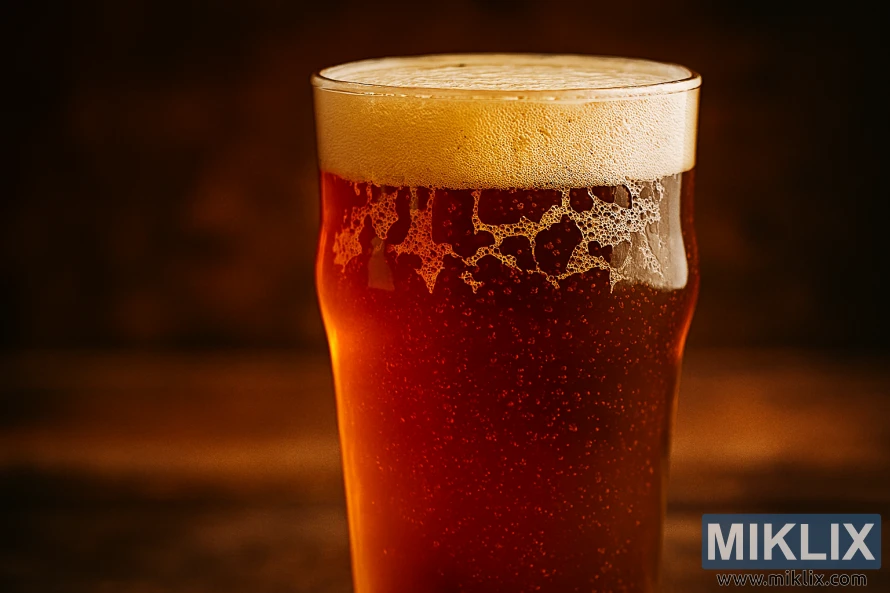
Dosage and Pitching Recommendations
The Bulldog B1 dosage is straightforward: one 10g sachet treats 20–25 L (5.3–6.6 US gallons) of wort. This makes it easy to plan for most homebrew batches.
For optimal results, use the recommended pitching rate for typical-strength ales. Sprinkle the dry yeast on top of the cooled wort when gravity and temperature are suitable. No rehydration is needed for standard batches.
For stronger beers or larger volumes, increase the cell count. If brewing strong IPAs, barleywines, or big stouts, consider adding a second 10g sachet or creating a starter to boost yeast numbers.
Here are practical tips for pitching Bulldog B1:
- Ensure wort temperature is between the recommended fermentation range before pitching.
- Sprinkle the contents evenly across the wort surface to improve dispersion.
- Aerate the wort well after pitching to support healthy yeast growth.
To reduce lag time or stress on the yeast, consider using a starter or split-sachet approach. Compare the Bulldog B1 pitching rate choices against original gravity and batch size. Decide if one 10g sachet is enough.
Fermentation Temperature and Behavior
The ideal fermentation temperature for Bulldog B1 is between 18–23°C (64–73°F), aiming for 21°C (70°F). Maintaining the wort at 21°C ensures consistent ester levels and predictable attenuation.
The fermenting temperature significantly impacts aroma and finish. A cooler temperature reduces fruity esters, tightening the body. On the other hand, a warmer temperature increases ester expression and may elevate attenuation.
Bulldog B1 exhibits robust behavior, tolerating the specified temperature range well. It suits many ale styles, outperforming West Coast strains that operate between 16–21°C or 18–23°C, depending on the yeast.
Lag time varies based on pitching rate and wort conditions. Underpitched dry strains like BRY-97 or some West Coast yeasts may experience longer lag phases. Increasing the pitch rate or warming the wort slightly can shorten lag.
- Target 21°C for reliable profile and repeatable results.
- If lag appears, raise temperature a few degrees or add yeast to shorten it.
- Monitor gravity and aroma rather than only airlock activity to judge progress.
Observing Bulldog B1 behavior in the first 48–72 hours provides insight into fermentation health. Early adjustments ensure the desired ester profile and final attenuation.
Attenuation, Body, and Final Gravity Expectations
Bulldog B1 attenuation is around 70–75%, a solid starting point for brewers. This range ensures the beer isn't too sweet or too dry. By tweaking the grain bill and mash temperature, you can fine-tune the beer's mouthfeel.
The body of a beer made with Bulldog B1 is expected to be balanced. It complements the flavors of pale ales and IPAs, allowing the hops to shine. To achieve a fuller body, increase the mash temperature or add dextrin malt. For a drier beer, lower the mash temperature or add more simple sugars.
Keep an eye on the final gravity (FG) of your beer. With a mid-70s attenuation, you should reach balanced ale FG values. Use a hydrometer or digital refractometer to track your progress and avoid overcarbonation when bottling.
Understanding Bulldog B1's attenuation compared to other strains is key. Yeasts like Safale US-05 can reach up to 80% attenuation, resulting in a drier beer. Bulldog B1 strikes a middle ground, making it versatile for various American beer styles.
For those seeking precision, consider running small test batches. Record the FG and body of your beer to refine your recipes. This approach ensures you achieve the exact balance of malt, hop clarity, and mouthfeel you desire.
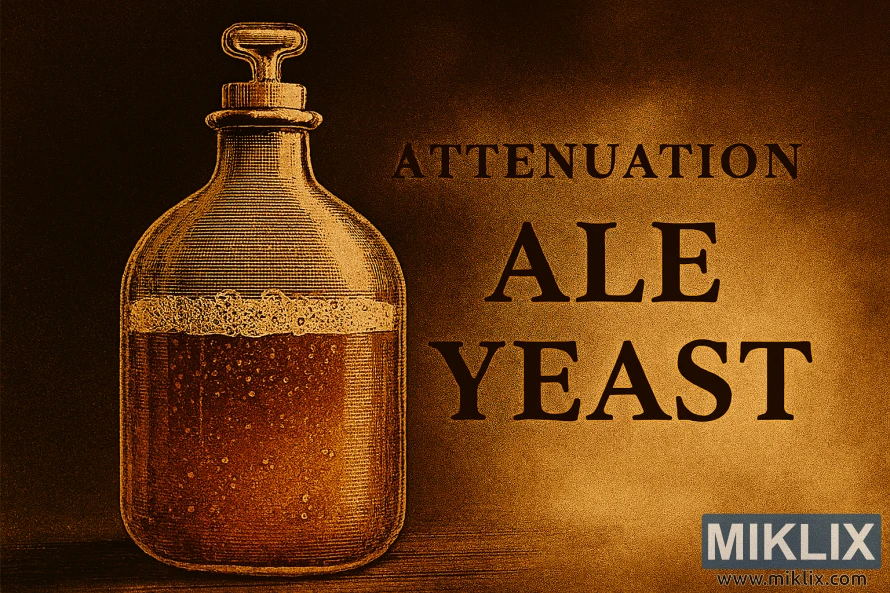
Flocculation and Clarity Management
Bulldog B1 medium flocculation offers homebrewers a balance. It ensures yeast settles predictably, avoiding the quick drop seen in English S-04. This characteristic allows for reasonable clarity but might leave a faint haze. To enhance clarity, consider a short cold crash at near-freezing temperatures for 24–72 hours.
Extended conditioning in the fermenter or bright tank aids in solid settling. This approach results in a cleaner pour. To further improve clarity, using fining agents like gelatin or Isinglass can expedite the clearing process.
- Fining agents like gelatin or Isinglass speed up clearing.
- Racking off the yeast cake reduces suspended yeast and improves polish.
- Filter or crash before packaging to cut yeast carryover into bottles or kegs.
Expect some yeast in packaged beer with Bulldog B1 flocculation unless you cold-crash or fine. The residual yeast can carbonate bottles naturally. This should be considered when planning priming and conditioning times.
For hop-forward styles like NEIPA, Bulldog B1 medium flocculation is beneficial. It allows for a soft haze that helps suspend hop oils, preserving mouthfeel. For crystal-clear ales or lagers, multiple clarification steps are necessary to achieve a glass-like finish.
Comparing Bulldog B1 to Other Dry Ale Yeasts
Bulldog B1 falls between many popular dry strains in terms of performance. It has an attenuation of about 70–75% and medium flocculation. Its working temperature range is near 18–23°C. This positioning makes it slightly lower in attenuation than US-05 but still suitable for similar body and mouthfeel in ales.
Comparing Bulldog B1 to US-05 reveals differences in finish and sediment. US-05 has a cleaner ester profile and higher attenuation, leading to a drier finish. It also produces fluffier bottle sediment compared to Bulldog B1.
In a comparison with BRY-97, the contrast is evident in hop handling and clarity. BRY-97, sold as Lallemand American West Coast, flocculates more and can be slower to start. It promotes hop biotransformation and usually shows higher attenuation than Bulldog B1.
Looking at a broader dry ale yeast comparison, English strains like S-04 and Bulldog B4 stand out. They lean toward English character with higher flocculation and faster clearing. Bulldog B1, on the other hand, is less flocculant. This characteristic helps retain some suspension and can contribute to haze in hop-forward beers.
- Attenuation: Bulldog B1 (70–75%) vs US-05 (~80%) vs BRY-97 (often higher than B1).
- Flocculation: Bulldog B1 is medium; S-04 and Bulldog B4 clear faster.
- Hop expression: Bulldog B1 and similar “hop-forward” dry yeasts emphasize biotransformation and aroma.
For homebrewers, Bulldog B1 is a versatile option. It suits both American and English styles, enhancing hop character without extreme attenuation.
Handling, Storage, and Shelf Life
Bulldog B1 is packaged in 10 g sealed sachets, making it easy to dose for a single batch. It's crucial to keep these sachets dry and cool. This ensures cell viability and maintains flavor consistency.
For storing Bulldog B1, place unopened sachets in the refrigerator or a cool pantry. This slows down viability loss. It also reduces the need to increase pitching rates.
The shelf life of Bulldog B1 depends on storage conditions. When stored cool and unopened, sachets maintain good performance for the period indicated on the packet. Heat exposure, on the other hand, shortens viability and may necessitate adjustments.
If refrigeration is not possible, store Bulldog B1 in the coolest part of your home. Avoid hot garages or direct sunlight. Refrigeration is the best practice for long-term storage.
- Packaging: 10 g sealed sachets—easy single-batch dosing.
- Best practice: store Bulldog B1 refrigerated or in a cool, stable spot.
- Risk: warm storage reduces Bulldog B1 shelf life and cell counts.
When sachets are old or have been exposed to warm conditions, increase the pitching rate or create a starter. Rehydrating cells before pitching can revive them. This improves fermentation reliability.
In cold climates, avoid storing Bulldog B1 in freezers. Freeze–thaw cycles can harm cells. Instead, opt for stable refrigeration to preserve activity.
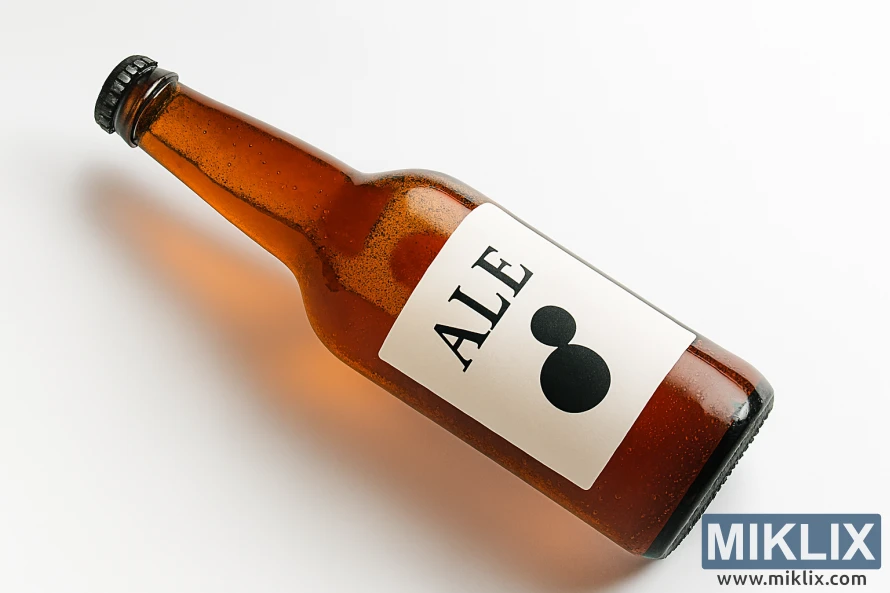
Pitching Techniques and Starter Alternatives
For standard homebrew batches, follow the manufacturer's instructions and sprinkle dry yeast directly onto cooled wort. This simple method works for most ales and keeps processes fast and clean. Use one sachet for a typical 5-gallon batch unless you face special conditions.
When dealing with high original gravity, underpitched batches, or cold fermentations, raise the pitching rate. Two sachets will cut lag time and reduce risk of off-flavors in challenging ferments. Brewers who want extra insurance often step up to a higher cell count before sealing the fermenter.
Rehydration of dry yeast gives a predictable start. Rehydrate in sterile water at the temperature the manufacturer recommends to protect cell walls. Bulldog B1 rehydration is useful when you need a fast onset of activity or when shipping and storage have been long.
If you prefer active growth, make a small starter using a pint of wort. A mini-starter boosts viable cells and reduces lag. Bulldog B1 starter alternatives include short, 12–24 hour starters or nutrient-fed micro-starters for high-gravity beers.
- Sprinkle directly for convenience and most 5-gallon ales.
- Rehydrate to improve viability and shorten lag.
- Create a mini-starter when brewing big beers or when pitch rate is critical.
- Use two sachets for cold or high-gravity ferments to guarantee performance.
Learn from similar strains like Wyeast BRY-97 and West Coast-style dry yeasts. They sometimes need higher pitch rates to avoid long lag periods. If you worry about a slow start, warm the wort slightly after pitching or boost the cell count.
Practical steps: hydrate in clean water at the recommended temperature or sprinkle and plan to increase pitch for critical batches. Keep sanitation tight during Bulldog B1 rehydration and when making any starter to protect yeast health and beer quality.
Fermentation Troubleshooting with Bulldog B1
Slow starts often stem from incorrect pitching rates or temperatures. For Bulldog B1 lag time, verify yeast freshness and hydration. Warm the fermenter slightly and mix the yeast gently to ensure proper suspension. If underpitched, consider creating a stepped starter or adding an active yeast slurry.
Stalled progress may indicate a stuck fermentation. Monitor gravity changes over 48 hours to confirm. Ensure proper oxygenation at pitch, assess the pitching rate against the original gravity, and slightly increase the temperature to stimulate yeast activity. Gently agitating the yeast can also help in completing fermentation.
Excessive yeast in bottles or kegs often results from medium flocculation. To minimize sediment, cool the beer before packaging and rack off most of the trub. Adding gelatin or Irish moss in the bright tank can enhance clarity. These methods effectively reduce yeast in packaged beer without stressing the yeast culture.
- Check pitching rate for target OG and style.
- Oxygenate wort thoroughly before pitching.
- Maintain steady fermentation temps near 21°C when suitable.
- Rehydrate dry yeast per manufacturer instructions if using new packs.
Preventive measures can significantly reduce the need for Bulldog B1 troubleshooting. Ensure the pitching rate matches the gravity, maintain consistent temperatures, and ensure proper oxygenation at pitch. These practices help minimize lag time, reduce the risk of stuck fermentation, and prevent off-flavors.
Flavor Outcomes and Hop Expression
The Bulldog B1 flavor profile showcases hop aromas and a hint of fruitiness. Brewers note a medium ester presence, which frames citrus, tropical, or stone-fruit notes. This does not overwhelm the hop clarity.
In hop-forward styles, Bulldog B1's hop expression is evident in dry-hopped IPAs and late-hop pale ales. The yeast ensures enough malt body to support resinous or juicy hops. This keeps the beer balanced.
Expect Bulldog B1 esters to add a gentle fruitiness, without the banana-heavy or clove-like phenolics found in other yeasts. This allows myrcene and linalool to shine in the aroma and flavor.
- Ferment near the recommended range to control ester levels and preserve hop aroma.
- Dry hop after primary fermentation to maximize Bulldog B1 hop expression.
- Avoid excessive warm conditioning if you want to keep Bulldog B1 esters subtle.
Compared to very neutral strains like US-05, Bulldog B1 has a less dry flavor profile and is more expressive. It's ideal when you want hops and gentle yeast-derived fruit to be part of the recipe.
Some yeast strains show specific enzymatic hop biotransformation. Bulldog B1 is marketed to showcase hop clarity and aroma but does not claim detailed enzymatic activity. Use deliberate hopping schedules and conditioning to get the most from Bulldog B1 hop expression.
Small adjustments to pitching rate and temperature give predictable shifts in Bulldog B1 esters. Lower temperatures reduce ester formation, while the upper end of the range brings more fruitiness. This can complement citrus or tropical hop varieties.
Batch Examples and Recipe Notes
Start with one 10 g sachet for 5.3–6.6 US gallons (20–25 L) as your base. This approach simplifies scaling for homebrewers aiming for consistent results in 5 and 6 gallon batches.
Here are some practical Bulldog B1 batch examples for homebrewing. Adjust the malt and hop schedules to achieve your desired OG and flavor profiles.
- Bulldog B1 IPA recipe (West Coast): Target OG 1.060, ferment at 21°C. Emphasize late kettle hops and a robust dry hop with Centennial, Simcoe, and Citra. Aim for mid-70s attenuation and a firm yet drinkable body.
- Bulldog B1 APA recipe (American Pale Ale): Aim for OG 1.052, ferment between 20–21°C. Use a clean base malt and Mosaic and Cascade hops for balanced citrus and pine. Expect a crisp finish from the yeast.
- Session pale ale: Target OG 1.040 or lower, same pitching rate. Fermentation will be clean with subtle fruity esters and hop brightness. Ideal for frequent consumption or warmer weather.
For beers with higher gravities, increase the pitching rate. Adding an extra sachet or building a starter can reduce lag time and prevent stuck fermentation. Prioritize yeast health and oxygenation for optimal performance with Bulldog B1.
Utilize the yeast’s medium flocculation to your advantage. For NEIPA-style haze retention, limit cold crashing and avoid heavy finings. For clearer beers, cold condition for several days and consider Irish moss or silica for a sparkling pour.
Ensure fermentation temperature remains steady within the recommended range. This preserves hop aroma in IPA recipes and maintains balance in APA recipes. Small adjustments to mash profile and water salts can fine-tune body and mouthfeel across Bulldog B1 recipes.
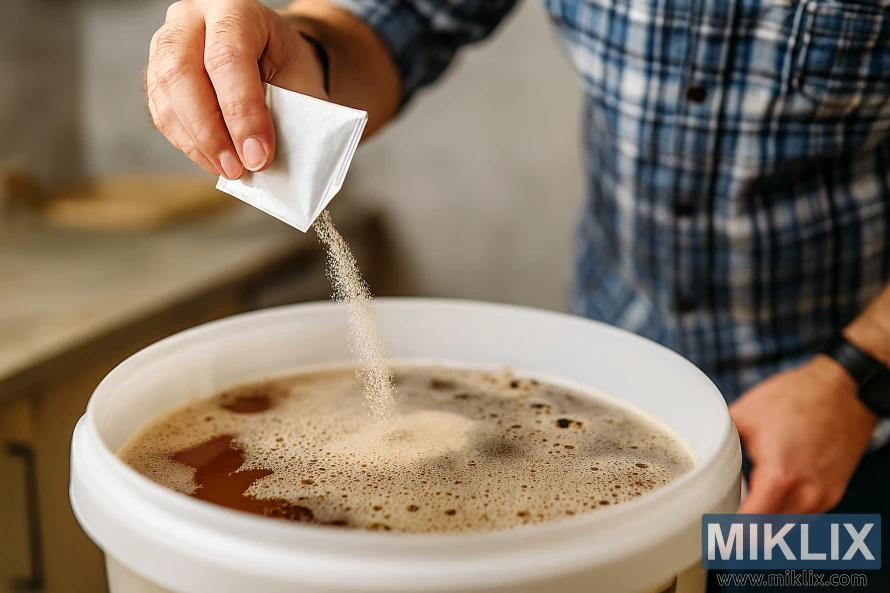
Community Feedback and Real‑World Reviews
Bulldog B1 reviews from homebrewers reveal a blend of practical insights. Many commend the yeast for its consistent fermentation and predictable attenuation. Brewers also highlight clean hop expression in IPAs and pale ales.
On forums, Bulldog B1's origins are a frequent topic of discussion. Users inquire if the yeast is a rebranded version of a known strain. The responses often rely on batch performance rather than confirmed lineage.
Users appreciate the convenience of Bulldog B1. Its single-sachet dosing and forgiving temperature range are beneficial for small-scale brewers. Several users note fewer stalled ferments compared to other dry yeasts.
Comparisons with US-05, S-04, and BRY-97 are common. Discussions revolve around lag time, flocculation, and final dryness. Many see Bulldog B1 as a dependable, mid-attenuation option for hop- and fruit-forward beers.
Practical takeaways from Bulldog B1 reviews focus on its suitability. Brewers seeking an all-purpose, hop-friendly dry yeast find it reliable and flavorful. Those aiming for a very dry finish or extreme flocculation might choose another strain.
- Common praise: consistent attenuation and clear hop character.
- Common concerns: limited public lineage details and variable ester profiles.
- Best fit: brewers prioritizing ease of use and tolerant fermentation performance.
The overall view from Bulldog B1 forum feedback and user reports is pragmatic. The community views the yeast as a tool, judged by its performance in the fermenter, not marketing claims. This practical approach influences ongoing experiments and recipe notes across forums and clubs.
Conclusion
Bulldog B1 Universal Ale Yeast is a dependable choice for homebrewers aiming for a hop- and fruit-forward taste. It requires a 10 g sachet for 20–25 L batches, ferments best at 18–23°C (around 21°C), and reaches attenuation of 70–75%. This makes it ideal for pale ales, IPAs, and Belgian-inspired ales.
The yeast's strengths include simplicity, clear hop expression, and certifications like Kosher and EAC. Yet, its exact strain lineage remains undisclosed. It offers mid-level attenuation and medium flocculation, making it versatile. Still, some may need to rehydrate, increase pitch rates, or extend cold conditioning for very dry finishes or crystal clarity.
So, should you use Bulldog B1? Yes, if you're a homebrewer looking for a reliable dry yeast that enhances hops and fruity esters. For high-gravity batches or specific attenuation and flocculation needs, consider adjusting the pitch or comparing it with strains like Fermentis US-05 or Lallemand BRY-97.
In the Bulldog B1 verdict, it's a solid generalist. It's easy to handle and consistent with proper pitching, temperature, and storage. Employ standard clarity and yeast-management techniques to refine your beer. If precise ester or attenuation differences are crucial, run side-by-side tests for repeatable success.
Further Reading
If you enjoyed this post, you may also like these suggestions:
- Fermenting Beer with White Labs WLP510 Bastogne Belgian Ale Yeast
- Fermenting Beer with Bulldog B34 German Lager Yeast
- Fermenting Beer with CellarScience Prime Yeast
